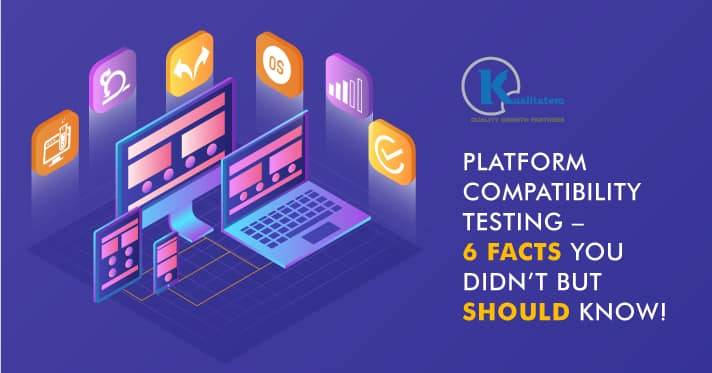Platform Compatibility Testing – 5 Facts You Should Know!

- December 20, 2018
- HibaSulaiman
Before a software product is released in the market, it is put through a series of tests. If passed, it earns the status of a ‘winner’, if not, it goes back to square one, i.e., to the developers for fixing and tweaking. These testing processes are performed to guarantee that the consumers get the best value and quality for the money they spend on the app.
Platform Compatibility testing enables the software development team to deliver an absolutely flawless product that functions as expected, regardless of the computing environments. It also helps in ensuring that the performance and user experience across various platforms remains uniform for every user.
Compatibility testing can be segregated into six categories:
- Device/Hardware
- Operating Systems
- Software
- Network
- Browser
- Resolution
These are just the basics of compatibility testing that every QA tester already knows. However, to perform platform compatibility testing, here are six facts that perhaps you didn’t know or realize of being aware of and should be knowing:
1. Never Skip Compatibility Testing!
If you hadn’t taken compatibility testing seriously, it’s time you should! You know why so many software applications fail to perform in the end? Because during the QA testing process, Compatibility testing was overlooked. For the success of your product, you need to ensure that the compatibility requirements are met.
This helps to confirm that you can safely release the software in the market and that it works seamlessly with different hardware and software versions, networks, as well as functions perfectly for global users. Hence, it is best to plan, review, and verify all your application’s compatibility requirements along with any desired functional requirements are working as planned.
2. Compatibility testing isn’t a random process; you need a fully equipped device lab!
Compatibility testing is not as easy-going as it might seem complex process. Depending on the product you need to use during the testing process, you need to set up appropriate environments that are closely used for stimulating the end-user device options for example desktops, servers, laptops, phones or tablets that change according to the requirements.
3. Forward and Backward types of compatibility test cannot be achieved 100%
When developing an app, we all intend to make an app that becomes everyone’s favorite and stays in demand for years. However, the reality is the opposite. When developing applications for future generations, you cannot ignore aspects such as investment in keeping the application up-to-date as well as product demise in terms of technology.
For example, if there is someone who is using a few years old apps, the app might experience compatibility issues. So, instead of making plans for the next 5 years, prefer to keep your application’s life or support for the past and next two generations of a computing environment in advance to guarantee its smooth functioning.
4. Determine the important requirements when performing compatibility testing
There exist a wide range of applications, from simple web apps to mobile apps and each type has their own level of complexity. Similarly, applications also vary according to their use, for example, an application used by company employees possess completely different compatibility for others being used domestically or otherwise. Even functionality of an app varies from region to region. Therefore, you need to make a test plan to determine the most important issues faced by the app users, while overlooking the irrelevant ones.
5. Be aware of the Operating System Being Used for A Compatibility Test
The wide selection of the operating systems has a significant impact on the stability and performance of the application. An application with poor performance will only lose its audience, compared to other useless applications. Therefore, you need to be very cautious when developing an application and also while performing the compatibility testing with the aim of gathering maximum traffic.
Conclusion
Compatibility testing of a software product is essential since it offers an optimal way to check your product’s functionality and performance and ensure it’s working efficiently.
Most organizations ignore compatibility testing without recognizing the benefits it offers. Hence, it should be considered mandatory for organizations to perform compatibility testing earlier in the software lifecycle development for optimum results.











